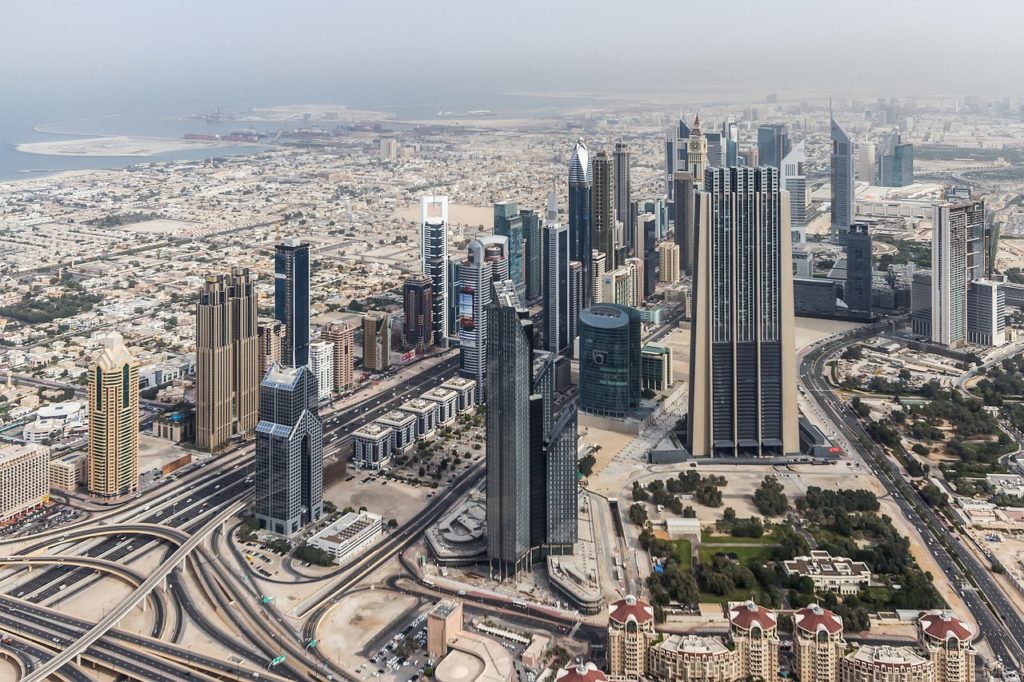In 2016 Dubai’s government leaders announced an ambition plan: by 2030, one-fourth of all trips in Dubai would be driverless. At the time, Sheikh Mohammed bin Rashid, Ruler of the Emirate of Dubai, told a media outlet that he wanted Dubai to become “the world’s biggest laboratory for technology, research, and development.”
In the ensuing years, the city’s leaders have gone beyond simple discussion and strategizing—instead, they have already implemented experimental programs, including testing electric taxi drones, and have challenged the rest of the world to innovate with them.
The Goals
Leaders have promoted the 2030 strategy on several fronts. They have said it will save the emirate billions of dollars in transportation costs, boost individual productivity, improve environmental conditions, and increase traffic safety. In a city where space is at a premium and traffic can be crippling, officials expect to reduce the need for parking spaces and make transportation more efficient through autonomous vehicles that drop riders off and move on to pick up the next customers.

The Dubai government estimates that implementing the Dubai Autonomous Transportation Strategy will result in a total costs savings of up to AED 22 billion, as well as the following:
- A 44 percent reduction in transportation costs
- A 12 percent reduction in environmental pollution
- A 12 percent reduction in traffic accidents and losses
- A 13 percent increase in individual productivity
- An annual savings of 396 million hours in transportation trips
- A reduced need for parking spaces
The Implementation
Dubai leaders already are exploring options and testing the following new transportation programs and technologies.
Driverless electric pods
In 2018 Dubai’s Roads and Transportation Authority began testing prototypes of driverless pods that operated in dedicated lanes. Built in Italy by the American firm Next Future Transportation, these electric pods can couple and uncouple in under 30 seconds while they are in motion. The idea is that pods will pick up riders individually, then attach to form a sort of bus that travels toward a common destination.
At 2.87×2.24 meters, a pod is an almost perfect square. It can seat six passengers and stand four and move at a top speed of 20 kilometers per hour. A pod’s battery can last an estimated three hours and recharge in six.
The pods, which are operated by a series of cameras and have three protection systems against crashes, will initially move along pre-programmed routes. Officials hope that the pods will one day be able to pick up residents from their homes.
Though officials unveiled the pods in March 2018, an official start date for the program has not yet been announced.
Electric taxi drones
Dubai began testing taxi drones, autonomous vehicles that can hover 200 meters above the ground, in 2017. The drones, which look like a two-seater helicopter, are equipped with a hoop with 18 propellers. Designed to fly for up to 30 minutes, the taxi drones come with back-up batteries and parachutes in case the flight fails.
Volocopter, the German company that designed the drone, said in 2017 that the flying taxi service could be in place within five years. The company envisions riders ordering a volocopter using a mobile phone app, and they would meet their ride at the nearest “voloport,” or a station where passengers can board and disembark the drones.
Airbus, an aircraft manufacturer, is developing a taxi drone as well. Called Vahana, the flying vehicle is planned to travel around 230 kilometers per hour and use radar, lidar, and cameras to detect obstacles. Company officials have said that drone and air traffic regulations, including how close they can fly to each other and how high they can fly, would need to be revised and refined for the service to operate successfully.
Hyperloop air train
Two companies are competing to be the first to develop a floating pod system that will carry thousands of passengers daily between Dubai and Abu Dhabi. Called the “Hyperloop,” this system of pods moving along a bed of air on a set route could travel up to 1,200 kilometers per hour and reduce the 140-kilometer trip from 80 minutes to 12 minutes.
Virgin Hyperloop One has opened an office in Dubai, its first outside the United States. Hyperloop One officials have told the media they chose Dubai because of its busy airport and because both Dubai and Abu Dhabi focus on becoming “smart cities” with significantly reduced carbon emissions.
Tech leaders have discussed making each route solar powered by installing solar panels on the tubes that the pods travel along. While the project does not have a completion date, a prototype was unveiled in June 2018.

